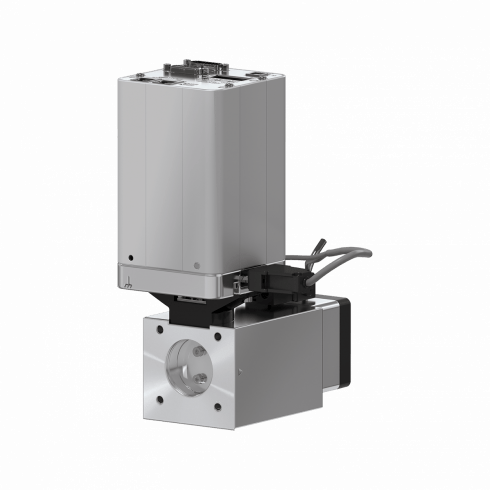In order to perfectly control process conditions in process or analysis chambers, a whole range of control and isolation valves is needed. Traditionally, they are installed as individual valves. This takes up space, lengthens the installation time, makes the whole system larger and the calibration more demanding.
One of the main problems is that as the number of individual valves increases, there are a corresponding number of flange and pipe connections. All these connections increase the risk of leakage - simply because there are more places for potential leaks in the vacuum system. In short, the higher the number of connections, the more critical points there are in the overall system.
Not to be forgotten: Each valve itself also occupies space, which of course must also be evacuated and controlled. Here we are talking about the so-called dead volume, which is only needed for assembly or for the valves themselves, but not for the process. Any additional volume can change the geometry in which the process is operated. For example, turbulence zones or zones with different temperatures are created. Fewer valves mean less dead volume, so in this case, less is more.
The solution: combine several functions
VAT is therefore pursuing the solution of combining several valve functions in one unit. This means that these functions are brought together in a confined space. Such combo valves reduce both the dead volume and the number of connections - in other words, the potential leakage points.
For the system producer, there are other advantages associated with combo solutions: assembly time is shorter because only the entire unit needs to be installed, rather than each valve individually. Furthermore, the units take up much less space and the systems can be made more compact overall. Operation is simplified immensely because it is no longer necessary to calibrate the individual valves. Only the unit has to be integrated into the process control system.
VAT offers the combo valves in standard sizes and standard combinations. This eliminates the development time normally required to design such solutions. One example is VAT's 95.3 HV Control and Isolation Valve Combo Unit. The best features from two technologies come together here to provide excellent controllability with hermetic isolation. This is accomplished by combining a control butterfly valve, which acts as a throttle valve, with an angle valve or gate valve. One controller for both valves is sufficient, and the additional flanges and connectors normally required when installing two separate valves are also eliminated.
Fast standards or customized manifolds?
Standard solutions are readily available, but sometimes something special is needed. VAT therefore also manufactures customized solutions that combine far more valves and a whole range of functions. These manifold vacuum valve solution are tailored to requirement.
Whether Manifold or standard solution: "The advantages in terms of the number of components are clearly evident," confirms Lukas Gächter from VAT. In some cases, customers report considerable space and thus cost savings. Construction volume and number of valves can be reduced by 30-40% percent. So there are many arguments for design engineers to look into the subject more intensively.

